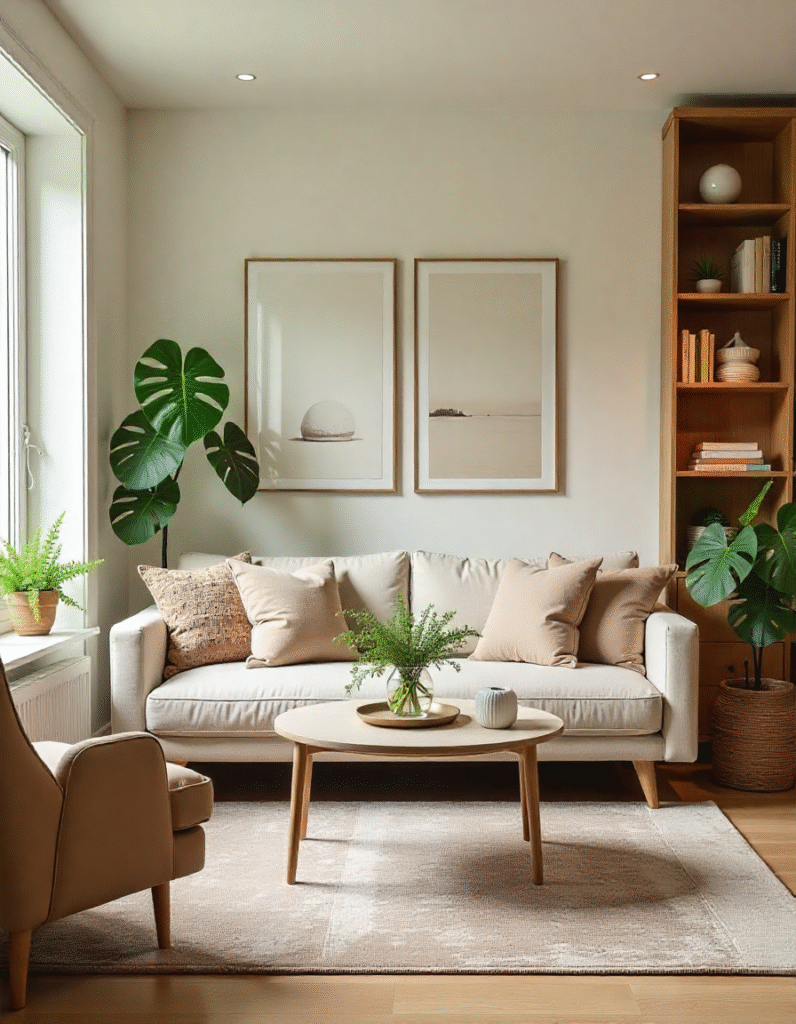Your home is more than just a place to live—it’s a reflection of who you are, your personality, and your lifestyle. Whether you’re moving into a new home or refreshing your current living space, decorating is an opportunity to express creativity, find comfort, and create an environment that brings peace and joy. With the constant evolution of interior design trends and the vast array of available options, it can sometimes feel overwhelming to know where to start.
In this article, we’ll explore practical tips and current trends in home décor to help you turn your house into a home that feels uniquely yours. From choosing the right color palette to embracing sustainability, we’ll guide you through the essential elements that contribute to creating a space that reflects your taste and meets your needs.
1. Finding Your Style: The Foundation of Your Home Design
The first step in transforming any space is understanding your personal style. Everyone’s sense of design is different, and your home should embody the aesthetic that resonates with you. Are you drawn to the simplicity of minimalism, the comfort of farmhouse style, or the boldness of eclectic décor?
-
Identify Your Inspirations: Start by gathering inspiration from various sources—Pinterest, interior design magazines, online blogs, and even nature. Take note of colors, materials, and designs that speak to you. This will help you narrow down your style preferences and create a clearer vision for your space.
-
Define Your Mood and Atmosphere: Think about how you want your home to feel. Do you prefer a calm, serene atmosphere with muted tones and natural textures? Or do you crave a space that is energetic and filled with vibrant colors and statement pieces? Your design choices should evoke the kind of emotions you want to experience in your home.
-
Consider Functionality: A beautiful home should not only be visually appealing but also practical. Consider how you use each room. Are there areas that require more storage? Do you need more seating for entertaining? Combining aesthetic choices with functionality is key to creating a space that works for you.
2. Color: Setting the Tone for Your Home
Color is one of the most powerful tools in home design, influencing mood, perception, and the overall feel of a room. The colors you choose for your walls, furniture, and accessories can completely transform your space.
-
Neutral Palettes: Neutral tones such as whites, grays, and beige are versatile and timeless. They provide a calm backdrop and allow other elements in the room, like furniture and décor, to shine. Neutrals can be paired with vibrant accent colors, creating a balance between simplicity and personality.
-
Bold and Statement Colors: If you’re looking for something more dramatic, consider incorporating bold colors like navy blue, deep green, or mustard yellow. Accent walls, colorful furniture, or striking artwork can add character and depth to a room. However, be mindful of the balance between bold colors and softer tones to avoid overwhelming the space.
-
Warm vs. Cool Tones: Warm tones like red, orange, and yellow bring energy and vibrancy to a room, making them ideal for social spaces like the living room or kitchen. Cool tones such as blue, green, and purple have a calming effect, making them perfect for bedrooms or bathrooms. Choosing the right temperature of color can enhance the mood you want to create in each room.
-
Accent Walls and Features: If you’re hesitant to commit to a bold color throughout the room, consider using accent walls or smaller features to introduce color. A brightly painted door, colorful cushions, or a patterned rug can add interest and personality without overwhelming the space.
3. Furniture: Combining Comfort and Style
Furniture plays a crucial role in both the functionality and aesthetic of your home. It should be both comfortable and stylish, catering to your daily needs while complementing your overall design.
-
Choosing the Right Pieces: When selecting furniture, think about the scale and proportion in relation to your space. Large sofas or tables can overwhelm smaller rooms, while too-small pieces can make larger rooms feel empty. Opt for multi-functional furniture, such as storage ottomans, sofa beds, or foldable tables, if you’re working with a limited space.
-
Quality Over Quantity: While it’s tempting to fill a room with many pieces of furniture, it’s more effective to choose fewer, higher-quality items that create a lasting impression. Well-crafted pieces made from durable materials will not only look great but also stand the test of time.
-
Comfort and Style in Balance: While aesthetics are important, never compromise on comfort. After all, your home should be a place where you can relax and unwind. Invest in comfortable seating, soft bedding, and furniture that offers both support and style.
-
Mixing Styles: Combining different furniture styles can add interest to a room. A modern sofa can look striking when paired with vintage coffee tables or mid-century modern chairs. Don’t be afraid to mix textures, like a leather chair with a cozy wool throw, to create contrast and warmth.
4. Lighting: The Heart of a Welcoming Home
Lighting is often overlooked but is one of the most important aspects of home design. The right lighting can enhance the atmosphere of a room, create mood, and even influence how you feel in the space.
-
Layered Lighting: Instead of relying on a single light source, use multiple layers of lighting to create depth and warmth. Ambient lighting provides overall illumination, task lighting focuses on specific areas (like reading lights or under-cabinet lighting), and accent lighting highlights artwork or architectural features.
-
Natural Light: Whenever possible, maximize natural light by using sheer curtains or blinds that allow sunlight to filter in. Natural light makes a room feel more spacious, airy, and vibrant. Consider strategically placing mirrors to reflect light and open up smaller rooms.
-
Statement Fixtures: Light fixtures can also serve as stylish statement pieces. Consider unique chandeliers, pendant lights, or sculptural lamps that add personality to your space. Choose fixtures that align with your overall design—whether it’s sleek and modern or rustic and eclectic.
-
Adjustable Lighting: Dimmer switches and smart lighting systems allow you to control the intensity of light in a room, helping to create the perfect ambiance for different occasions. Whether you’re hosting a dinner party or winding down after a long day, adjustable lighting makes a big difference.
5. Accessories and Personal Touches
Accessories are the finishing touches that tie a room together and reflect your personal style. Whether it’s a carefully chosen rug, unique artwork, or decorative vases, these items can add depth, texture, and color to your space.
-
Art and Wall Décor: Art is a powerful way to express your personality and add character to your home. Choose pieces that resonate with you—whether it’s abstract paintings, black-and-white photography, or vintage posters. Mix and match frame styles and sizes to create a gallery wall that tells a story.
-
Textiles: Soft furnishings, such as throw pillows, blankets, and curtains, can add texture and warmth to a room. Mixing different fabrics, like velvet, linen, and wool, creates a cozy and inviting atmosphere. Play with patterns and colors to complement your room’s palette.
-
Indoor Plants: Adding greenery to your home not only enhances the décor but also improves air quality and creates a calming environment. Choose plants that thrive in the light conditions of your space and fit the style of your home. From large statement plants like fiddle leaf figs to smaller potted succulents, plants can add a refreshing, organic touch to any room.
-
Personal Collections and Mementos: Incorporating personal items—such as travel souvenirs, family heirlooms, or favorite books—can make your home feel more lived-in and authentic. These items bring warmth, personality, and uniqueness to your décor.
6. Sustainability in Home Design: Eco-Friendly Choices
Sustainability is becoming a significant focus in interior design, as more people seek to reduce their environmental impact. From energy-efficient appliances to eco-friendly materials, sustainable design choices are not only good for the planet but also beneficial for your health and well-being.
-
Eco-Friendly Materials: Choose materials that are sustainable and non-toxic, such as bamboo, reclaimed wood, or cork. These materials are durable, renewable, and often better for indoor air quality.
-
Energy Efficiency: Incorporate energy-efficient appliances, lighting, and insulation to reduce your home’s energy consumption. This not only helps the environment but also lowers utility bills over time.
-
Upcycling and Repurposing: Repurposing old furniture or upcycling vintage finds is a great way to reduce waste and add unique character to your home. By breathing new life into secondhand items, you can create a one-of-a-kind look while also minimizing your environmental footprint.
Conclusion
Designing your home is an opportunity to create a space that reflects who you are and supports the life you want to live. Whether you’re drawn to minimalist elegance or bold, eclectic design, the key to a successful home décor journey lies in blending aesthetics with functionality. By choosing the right colors, furniture, lighting, and accessories, you can craft a living space that’s not only beautiful but also comfortable, efficient, and aligned with your values.
With each thoughtful decision, your home will evolve into a space that welcomes you, inspires you, and provides you with a sense of peace and fulfillment. Remember, a home is more than just a structure—it’s a reflection of your personal style, and the perfect environment for creating memories and living well.




















